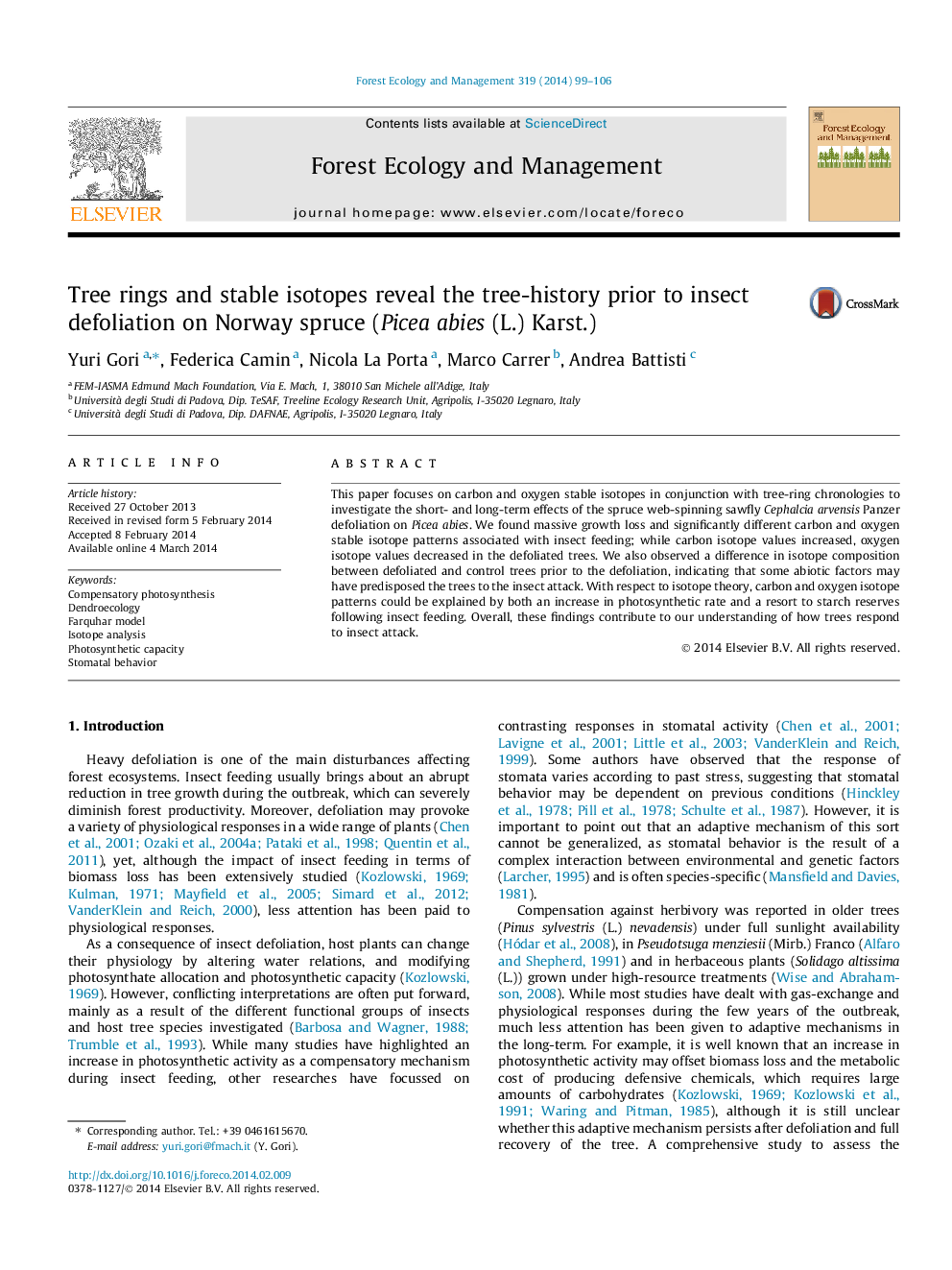| Article ID | Journal | Published Year | Pages | File Type |
|---|---|---|---|---|
| 86656 | Forest Ecology and Management | 2014 | 8 Pages |
•Stable isotopes and tree-ring width have been measured in defoliated trees.•Growth loss and different isotope patterns were related to defoliation.•These results may be related to an increase in photosynthetic rate.
This paper focuses on carbon and oxygen stable isotopes in conjunction with tree-ring chronologies to investigate the short- and long-term effects of the spruce web-spinning sawfly Cephalcia arvensis Panzer defoliation on Picea abies. We found massive growth loss and significantly different carbon and oxygen stable isotope patterns associated with insect feeding; while carbon isotope values increased, oxygen isotope values decreased in the defoliated trees. We also observed a difference in isotope composition between defoliated and control trees prior to the defoliation, indicating that some abiotic factors may have predisposed the trees to the insect attack. With respect to isotope theory, carbon and oxygen isotope patterns could be explained by both an increase in photosynthetic rate and a resort to starch reserves following insect feeding. Overall, these findings contribute to our understanding of how trees respond to insect attack.
